List of open-source mobile phones
This is a list of mobile phones with open-source operating systems.
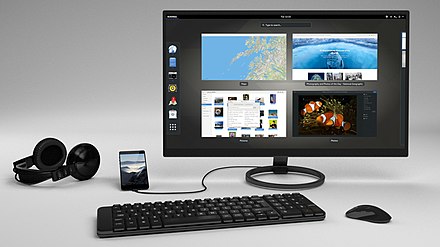
Scope of the list
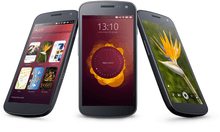
Cellular modem and other firmware
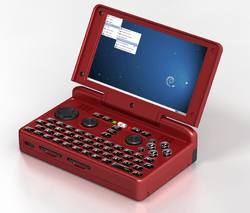
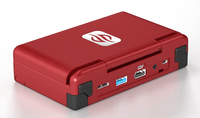
Some hardware components used in phones require drivers (firmware) to run. For many components, only proprietary drivers are available[1] (open source phones usually seek components with open drivers.) If these drivers are not updatable and do not have control over any other part of the phone, they might be considered equivalent to part of the hardware. However, these conditions do not hold for cellular modems.[1]
As of 2019, all available mobile phones have a proprietary baseband chip (GSM module, cellular modem),[2][3][4] except for the Necuno, which has no such chip and communicates by peer-to-peer VOIP.[5][6] The modem is usually integrated with the system-on-a-chip and the memory.[4] This presents security concerns; baseband attacks can read and alter data on the phone remotely.
The Librem 5 mobile segregates the modem from the system and memory, making it a separate module, a configuration rare in modern cellphones.[3][4] There is an open-source baseband project, OsmocomBB. There is a project based on illicit leaked source code for the Calypso modem called FreeCalypso.
Operating system: middleware and user interface
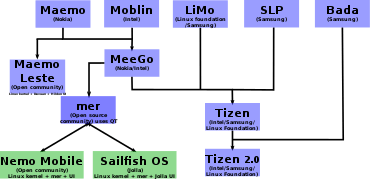
Generally, the phones included on this list contain copyleft software other than the Linux kernel, and minimal closed-source component drivers (see section above).
- Android-based devices do not appear on this list because of the heavy use of proprietary components, particularly drivers and applications.[7][1][8]
- There are numerous versions of Android which seek to replace the proprietary components, such as LineageOS (successor to the now-defunct[9][10] Cyanogenmod) and Replicant, that can be installed on a large number of phones after-market. Phones natively running these are included.
- WebOS was initially available only under a proprietary license but the source code was later released under a free permissive license by HP. Open WebOS will not run on all WebOS devices.
- Firefox OS was released under a permissive MIT license but its KaiOS successor is proprietary; the former is included.
- Maemo (mixed permissive and proprietary licenses) spawned Maemo Leste (permissive and protective) and MeeGo (permissive); MeeGo split into Tizen (proprietary) and Mer middleware (see diagram). All but Tizen are included.
- Sailfish OS is a proprietary user interface atop the Mer middleware; it is thus not included.
- Qt Extended had proprietary components and is not included, but its community fork QTMoko/OpenMoko is.
Note that it is often possible to install a wide variety of open-source operating systems on any open-source phone; the higher-level software is designed to be largely interchangeable and independent of the hardware.[11]
List
| Organization | Model | Mobile operating system | Operating system support | Date released (or cancelled) |
Current state |
|---|---|---|---|---|---|
| OpenPandora GmbH[12] | DragonBox Pyra Mobile Edition[13] | Debian[13] | Yes | TBD[13] | Taking preorders[13] |
| Purism | Librem 5[14] | PureOS | PureOS is a Debian derivative developed by Purism for their mobiles; lifetime support guarantee | 2019-11 | Taking preorders[15] |
| Pine64 | PinePhone[16] | Multiple operating systems.
Beta "Braveheart" Edition had a choice of user-installed OS;[17] "Community" Edition pre-installed with UBports was available June 15, to be followed by further OSs.[18] |
Community-driven | 2019-11 | Shipping Community Edition |
| Necuno Solutions | Necunos NC 1[19] | Multiple operating systems | Community-driven | 2019 Summer[20] | Unavailable (website unaccessible)[21] |
| Neo900 | GTA04 based motherboard, fitting inside the shell of a Nokia N900. | QtMoko, Debian, SHR (Stable Hybrid Release), Replicant | 2018-03 (last updated) | Stalled[22] | |
| Meizu | Meizu PRO 5 Ubuntu Edition | Ubuntu Touch | UBports, community-driven[23] | 2016-02 | In stores in Egypt, Russia, Ukraine, and Asia Pacific; online in Egypt, Russia, India and Sri Lanka.[24] |
| Meizu | Meizu MX4 Ubuntu Edition | Ubuntu Touch | UBports, community-driven[23] | 2015-07 | In stores in Egypt, Russia, Ukraine, and Asia Pacific; online in Egypt, Russia, India and Sri Lanka.[24] |
| BQ | BQ Aquaris E5 HD Ubuntu Edition | Ubuntu Touch | UBports, community-driven[23] | 2015-06 | Not currently orderable, but company is taking a list of interested parties[25] |
| BQ | BQ Aquaris E4.5 Ubuntu Edition | Ubuntu Touch | UBports, community-driven[23] | 2015-02 | Discontinued |
| GeeksPhone | Revolution | Firefox OS | Discontinued; formerly developed by the Mozilla Foundation under the Mozilla Public License, later proprietized as KaiOS | 2014 | Discontinued |
| GeeksPhone | Peak+ | Firefox OS | Discontinued; formerly developed by the Mozilla Foundation under the Mozilla Public License, later proprietized as KaiOS | 2013-11 (cancellation)[26] | Cancelled[26] |
| Alcatel | One Touch Fire | Firefox OS | Discontinued; formerly developed by the Mozilla Foundation under the Mozilla Public License, later proprietized as KaiOS | 2013-07 | Discontinued |
| ZTE | Open | Firefox OS | Discontinued; formerly developed by the Mozilla Foundation under the Mozilla Public License, later proprietized as KaiOS | 2013-07 | Discontinued |
| GeeksPhone | Keon | Firefox OS | Discontinued; formerly developed by the Mozilla Foundation under the Mozilla Public License, later proprietized as KaiOS | 2013-04-23 | Discontinued |
| GeeksPhone | Peak | Firefox OS | Discontinued; formerly developed by the Mozilla Foundation under the Mozilla Public License, later proprietized as KaiOS | 2013-04-23 | Discontinued |
| Golden Delicious | GTA04 | QtMoko, Debian, SHR (Stable Hybrid Release), Replicant | 2012-04 | "Currently not in stock" | |
| Aava mobile | Developer phone | MeeGo | Discontinued | 2011 | Discontinued (available to developers only)[27] |
| Nokia | N950 | MeeGo 1.2 Harmattan | Discontinued; formerly hosted by the Linux Foundation | 2011 | Discontinued (available to developers only) |
| Nokia | N9 | MeeGo 1.2 Harmattan | Discontinued; formerly hosted by the Linux Foundation | 2011 | Discontinued |
| Nokia | N900 | Maemo 5 (Fremantle) (some proprietary components until Maemo Leste) |
Discontinued | 2009-11-11 | Discontinued |
| OpenMoko | Neo FreeRunner (code name GTA02) | Openmoko/QTMoko Linux, Debian, SHR (Stable Hybrid Release), Gentoo (all Linux-based), Inferno | 2008-06-24 | Discontinued | |
| OpenMoko | Neo 1973 (code name GTA01) | Openmoko Linux (Linux-based) | 2007-07-09 | Discontinued | |
Features
| Model | Hardware kill switches | System-on-a-chip (Soc) | Baseband cellular modem | Wi-fi firmware | Boot firmware | Other proprietary firmware | Hardware licensing | Obsolescence | Modifiability | Security | Certifications | Other |
|---|---|---|---|---|---|---|---|---|---|---|---|---|
| Librem 5 | 3: Cameras and the microphone, Wi-Fi and Bluetooth, and baseband processor. All three also shut off sensors (GPS, compass, accelerometer etc.).[11] | 2017 NXP arm64[11] | On replaceable m.2 card. Proprietary firmware isolated from CPU with a USB bus (like a USB wi-fi dongle)[11] | Originally, proprietary firmware isolated over USB, no downloadable/modifiable firmware;[28] subsequently, Purism paid Redpine Signals to create open-source Wi-fi/Bluetooth firmware for the RedPine hardware.[29][30] | proprietary DRAM init code loaded on separate CPU[11] for RYF cert compliance[31][32] | none in /lib/firmware; some non-modifiable proprietary firmware in components.[29] | schematics released under GPL 3.0+[29] | User-replacable (but custom-sized[29]) battery, lifetime updates[33] Display and frame fused. Phillips-head screws.[29] Wi-fi and Bluetooth on replacable m.2 cards (the former custom-made).[29] | m.2 card slots. Purism has traditionally had more time-limited parts availability.[29] | slot for an OpenPGP card, planned Librem key support[29] | Tentatively recommended by Free Software Foundation (FSF).[34]
|
Convergence; will run as desktop.[33] Headphone jack. Carrier-free OTT service planned.[39] |
| PinePhone | 5: Modem & GNSS, WiFi & Bluetooth, microphone, rear camera, front camera, audio jack[40] (DIP switches inside back cover[11]). No kill switch for other sensors.[29] | 2015 Allwinner arm64 (Allwinner violates the GPL)[11] | Quectel EG25-G. Proprietary firmware isolated from CPU with a USB bus[11][41] | proprietary WiFi/Bluetooth firmware[41] in /lib/firmware[29] | open-source boot software[11] | proprietary schematics published[29] | User-replacable battery, 5-year production run. Phillips-head screws.[29] | I2C pogo pins, back mods can be added. Cannot be upgraded beyond USB 2.0. Bootable from a microSD card. Good parts availability.[29] | GPS and modem on same kill switch; neither can be used while the other is airgapped.[29] | proprietary code in /lib/firmware currently makes the mobile ineligible for RYF cert.[29] | entire phone can be disassembled. Headphone jack. | |
| Necunos NC 1 | None | None | strong focus; most sensors omitted for security. | Seeking FSF endorsement.[42] | Ethernet port | |||||||
| Meizu PRO 5 Ubuntu Edition | None | |||||||||||
| Meizu MX4 Ubuntu Edition | None | |||||||||||
| BQ Aquaris E5 HD Ubuntu Edition | None | |||||||||||
| BQ Aquaris E4.5 Ubuntu Edition | None | |||||||||||
Distributions for existing phones

postmarketOS, Ubports, and KDE Neon are open-source distributions running on existing smartphones originally running Android. Maemo Leste is available for Nokia N900 and Motorola Droid 4.
There exists a database listing which older phones will run which open-source operating systems.[43][44]
Custom-made phones
It is possible to home-build a phone from partially open hardware and software.[45][46] The Arduinophone[46] (touchscreen) and the MIT DIY Cellphone (segmented display)[47][48] both use the Arduino open-hardware single-board computer, with added components. The PiPhone[49] and ZeroPhone[50] are similar, but based on the Raspberry Pi.
The main components to make an open mobile phone are:
- Back cover
- Touch screen
- Battery
- Logic board
See also
- Mobile operating system (categorized by license)
- postmarketOS
- Greenphone
- Mobile device (mobile platform)
- OsmocomBB
- Blackphone
- Fairphone
References
- Stallman, Richard (19 September 2011). "Is Android really free software? – Google's smartphone code is often described as 'open' or 'free' – but when examined by the Free Software Foundation, it starts to look like something different". The Guardian. Retrieved 9 September 2012.
the software of Android versions 1 and 2 was mostly developed by Google; Google released it under the Apache 2.0 license, which is a lax free software license without copyleft. ... The version of Linux included in Android is not entirely free software, since it contains non-free "binary blobs"... Android is very different from the GNU/Linux operating system because it contains very little of GNU.
- Welte, Harald (5 February 2010). "OsmocomBB Project Rationale". Retrieved 26 September 2013.
Every mobile device that is connected to a cellular network runs some kind of baseband processor with highly proprietary and closed-source firmware.
- Amadeo, Ron (26 September 2019). "Purism's Librem 5 phone starts shipping—a fully open GNU/Linux phone". Ars Technica. Retrieved 8 October 2019.
Purism actually couldn't find an open provider for the cellular modem, so the best it could do was isolate it from the rest of the system in an M.2 slot.
- FaerberCTO, Nicole (4 September 2018). "Progress update from the Librem 5 hardware department". Purism.
The cellular modem is arguably the most complex part of a mobile phone. The modem is the component that has to implement all the familiar protocols you would associate with a phone (like 2G, 3G, 4G and the upcoming 5G). It does so by running its own proprietary black box operating system. The cellular modem is also covered by thousands of patents held by hundreds of patent owners. Now imagine this… This cellular modem sits right on the same RAM bus as the SoC! Non-free software not only has access to the data flowing to and from the SoC, but also has the ability to modify it. Because this modem operating system is a propreitary black box, we have no idea what this component does or what kind of vulnerabilities it has... The situation is further complicated by the fact that during our research into cellular modems, we realized that there are only a handful of silicon vendors in the world that make these chipsets and nearly all of them integrate their model with the SoC on the same bus. In addition, you historically need to acquire a license to run the proprietary firmware to power the modem on SoCs.. This left us with only one choice: to use ready-made modem “modules” and our own layout that isolates the modem from the SoC. There are a number of these modem modules available in different form factors with various available options in speed, bands, etc. By going the module route we can both provide supplier choice in modems that meet our strict standards, and also allow modem isolation from the RAM and host CPU.(text is CC-by-SA 4.0)
- Aufranc, Jean-Luc (30 November 2018). "Necuno Mobile Open Source Linux Smartphone is Powered by NXP i.MX 6 Processor". CNX Software - Embedded Systems News.
- "Necunos - Redefining Mobile Security". Necuno Solutions.
- Android (operating system)#Licensing "drivers and firmware vital for the proper functioning of Android devices are usually proprietary"
- Stallman, Richard (5 August 2012). "Android and Users' Freedom – Support the Free Your Android campaign". gnu.org. Retrieved 9 September 2012.
Even though the Android phones of today are considerably less bad than Apple or Windows smartphones, they cannot be said to respect your freedom.
- "Yes, this is us". lineageos.org.
- "A fork in the road | CyanogenMod". 25 December 2016. Archived from the original on 25 December 2016.
- Braam, Martijn (20 December 2019). "Yet Another Librem 5 and PinePhone comparison". TuxPhones.
- "Legal Information". Official Pyra and Pandora Site.
- "The Pyra". Official Pyra and Pandora Site. Retrieved 13 August 2020.
The mobile edition adds mobile internet, and also has telephony services (making the Pyra a phone)
- Librem 5 – A Security and Privacy Focused Phone. 15 November 2017.
- "Librem 5 store page". 2019–2020.
- PinePhone website. 2019-10-02.
- "PinePhones Start Shipping - All You Need To Know". PINE64 +. 15 January 2020.
As for software, the phone arrives preloaded with a factory test image rather than an end-user operating system. This preloaded factory test suite is running on Linux – postmarketOS to be precise – which allows you to test various features of the phone and run an automated test. ... I assume that everyone getting a Braveheart PinePhone understand that it’s up to them to find the operating system build they are interested in, flash it and take part in the community discussion and ongoing development. Most builds are available on the PinePhone Wiki
- Erecinski, Lukasz. "June Update: postmarketOS CE PinePhone, Shipping & PINE64 Cluster". PINE64.
- Necunos for Community. 10 February 2019.
- NC_1 Shipping Update. 1 April 2019
- "Necunos Shop". necunos.com. Retrieved 29 June 2019.
- "Neo900". neo900.org.
- UBPorts - UBPorts keeps Ubuntu Touch alive. 04 September 2017.
- "Where To Buy-Meizu". www.meizu.com.
- "bq Aquaris E5 4G". store.bq.com.
- "Peak+ cancellation". 28 November 2013.
- "Aava Mobile Oy". www.aavamobile.com.
- Faerber, Nicole (4 September 2018). "Progress update from the Librem 5 hardware department". Purism.
- Batto, Amos (1 December 2019). "Trying to decide between the PinePhone and the Librem 5". Random thoughts, conocimiento no conocido, yachay mana yachasqachu.
- Faeber, Nicole. "Librem 5 - WiFi Specs". Purism community.
- Ainslie, Angus (19 June 2018). "Solving the first FSF RYF hurdle for the Librem 5". Purism.
- Larabel, Michael. "Purism's Librem 5 To Rely On Secondary Processor For Binary Blobs - Phoronix". www.phoronix.com.
- Amadeo, Ron (26 September 2019). "Purism's Librem 5 phone starts shipping—a fully open GNU/Linux phone". Ars Technica.
- "Ethical Tech | Giving Guide". www.fsf.org. Retrieved 7 July 2020.
- Robertson, Donald (21 December 2017). "FSF adds PureOS to list of endorsed GNU/Linux distributions". www.fsf.org. Retrieved 7 July 2020.
- "Free GNU/Linux distributions". GNU.
- Ainslie, Angus (19 June 2018). "Solving the first FSF RYF hurdle for the Librem 5". Purism. Retrieved 7 July 2020.
- Foster, Jeremiah C. (19 September 2019). "Librem 5 — Promise Delivery Chart". Purism community. Retrieved 7 July 2020.
- Weaver, Todd (1 August 2019). "What a No-Carrier Phone Could Look Like". Purism.
- Leprince-Ringuet, Daphne. "This Linux smartphone is now shipping for $150". ZDNet. Retrieved 20 January 2020.
- Erecinski, Lukasz. "Setting the Record Straight: PinePhone Misconceptions". PINE64.
- Batto, Amos. "Comparing specs of upcoming Linux phones". Purism community.
- Mehta, Tushar (12 November 2019). "Here's a list of 200+ smartphones that can run Linux distributions". xda-developers.
- Gatti, Matteo (12 November 2019). "Linux: ecco una lista di oltre 200 smartphone compatibili con il pinguino". Linux Freedom (in Italian).
- Making your own phone is easier than you might think, Lisa Grossman, Issue 2909, New Scientist Magazine
- Arduinophone designer's description
- DIY Cellphone on the designer's MIT homepage
- David A. Mellis & Leah Buechley. 2014. Do-It-Yourself Cellphones: An Investigation into the Possibilities and Limits of High-Tech DIY. In Proceedings of the 32nd annual ACM conference on Human factors in computing systems (CHI '14).
- daveh, Author (25 April 2014). "PiPhone – A Raspberry Pi based Smartphone".
- ZeroPhone – a Raspberry Pi Zero based smartphone
